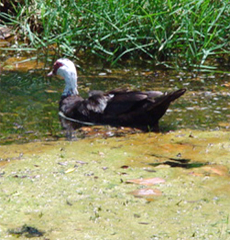
AMMONIA IN POND WATER

| High levels of ammonia can change the nutrient ratio in the pond, resulting in algal or cyanobacteria blooms. |
Ammonia in Nature |
||
|
In pristine natural environments, free nitrogenous compounds such as ammonia, nitrite and nitrate are extremely scarce, virtually all the available nitrogen is 'locked away' as plant or animal protein. But today, even natural environments, such as lakes or rivers can be affected by high levels of ammonia, nitrite or nitrate. The major routes of entry of nitrogen into bodies of water are municipal and industrial wastewater, sewage works, septic tanks, waterways are polluted by farming activities, feed lot discharges, animal wastes (from birds, waterfowl and fish) and discharges from car exhausts. Problems associated with excess Ammonia in Ponds In managed closed environments, typical of the average pond, the problem of excess ammonia, nitrites and nitrates becomes apparent. The volumes of water in a fish pond are quite minute when compared to a large lake, so there is far less dilution nitrogenous compounds. Ammonia is constantly being produced in aquaculture environments, small amounts can be traced to the diffusion of blood across the gill membranes of fish, but the majority of ammonia is produced through the process of mineralization which involves the conversion of waste products in the pond to ammonia by heterotrophic bacteria. Another difference is the lack of plant life in the average pond. Algae, which produces 'green water', and blanketweed are actively discouraged by fish keepers, leading to very little nitrogen being converted into plant protein. The end result is that free nitrogenous compounds are common in fish ponds - in stark contrast to what one finds in nature. Symptoms high ammonia, nitrite and/or nitrate
What are nitrifiers? - more information Ammonia reducing products - Product information Ammonia reducing products - Product Sales of NITRO-CLEAR Nitrifiers |
|
Ammonia- nitrogen Ammonia in nature Wastewater Nitrifiers Product Info